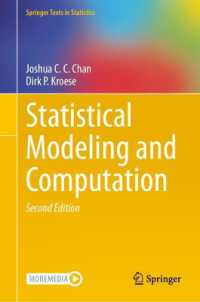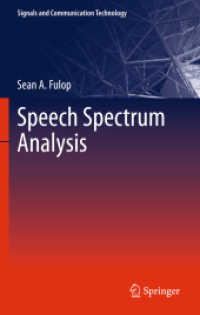- ホーム
- > 洋書
- > 英文書
- > Politics / International Relations
Full Description
Timothy W. Crawford's The Power to Divide examines the use of wedge strategies, a form of divisive statecraft designed to isolate adversaries from allies and potential supporters to gain key advantages. With a multidimensional argument about the power of accommodation in competition, and a survey of alliance diplomacy around both World Wars, The Power to Divide artfully analyzes the past and future performance of wedge strategy in great power politics.
Crawford argues that nations attempting to use wedge strategy do best when they credibly accommodate likely or established allies of their enemies. He also argues that a divider's own alliances can pose obstacles to success and explains the conditions that help dividers overcome them. He advances these claims in eight focused studies of alliance diplomacy surrounding the World Wars, derived from published official documents and secondary histories. Through those narratives, Crawford adeptly assesses the record of countries that tried an accommodative wedge strategy, and why ultimately, they succeeded or failed. These calculated actions often became turning points, desired or not, in a nation's established power.
For policymakers today facing threats to power from great power competitors, Crawford argues that a deeper historical and theoretical grasp of the role of these wedge strategies in alliance politics and grand strategy is necessary. Crawford drives home the contemporary relevance of the analysis with a survey of China's potential to use such strategies to divide India from the US, and the United States' potential to use them to forestall a China-Russia alliance, and closes with a review of key theoretical insights for policy.
Contents
Introduction: The Power to Divide in Alliance Politics
1. The Theory of Selective Accommodation
2. Germany Fails to Detach Japan, 1915-16
3. Germany Keeps the United States Neutral, 1914-16
4. The Entente Fails to Keep Turkey Neutral, 1914
5. The Entente Realigns Italy, 1915
6. Britain and France Fail to Neutralize Italy, 1936-40
7. Germany Divides the USSR from Britain and France, 1939
8. Britain and the United States Neutralize Spain, 1940-41
9. Germany Fails to Realign Turkey, 1941
10. When Does Selective Accommodation Work? Claims and Case Comparisons
11. Selective Accommodation in Great Power Competition and U.S. Grand Strategy








